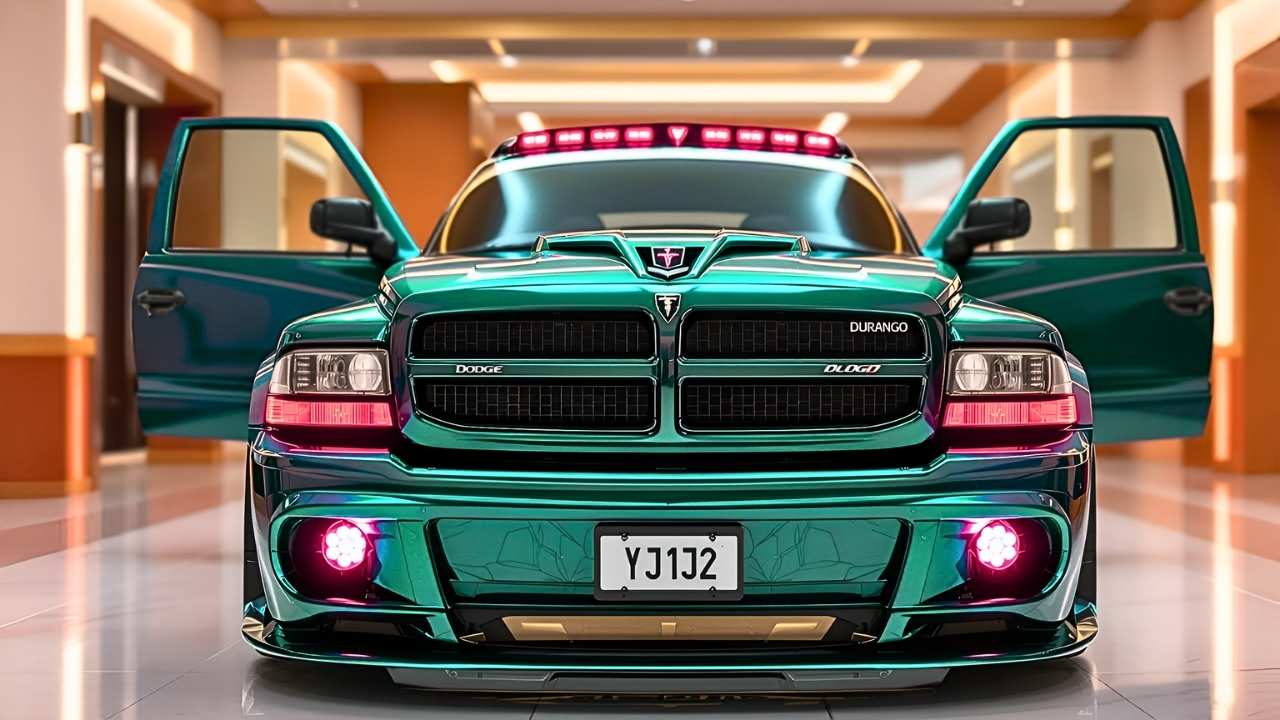When you think of American SUVs from the 1990s, one name that instantly comes to mind is the Dodge Durango. The 1997 Dodge Durango marked the beginning of something new for Dodge a vehicle that combined the rugged power of a truck with the comfort and practicality of a family SUV. It was bold, boxy, and unapologetically American. For many drivers, it represented the golden age of full-size SUVs strong, simple, and built to last.
This review takes a closer look at what made the 1997 Dodge Durango so special, from its engine and performance to its interior design and long-lasting legacy.
The Birth of a 90s Icon
The 1997 model was Dodge’s answer to a growing demand for SUVs that could do it all. At the time, American families were shifting away from minivans and sedans, craving something more powerful and capable. Dodge saw an opportunity and introduced the Durango as a midsize SUV that could tow like a truck, handle rough terrain, and still carry the whole family in comfort.
Built on the Dakota pickup platform, the Durango was tough from the start. It shared many of its components with Dodge’s reliable truck lineup, giving it durability and strength that many SUVs of its era couldn’t match. The design was muscular and confident, featuring a wide stance, aggressive front grille, and plenty of road presence.
Engine and Performance
Under the hood, the 1997 Dodge Durango offered several engine options that appealed to different types of drivers. The most common was the 5.2-liter Magnum V8, known for its solid power delivery and classic American rumble. For those who wanted even more muscle, Dodge also offered a 5.9-liter Magnum V8, which became a favorite among enthusiasts who valued raw torque and towing capability.
The engines were paired with a smooth 4-speed automatic transmission that handled power well for its time. The Durango wasn’t built for racing, but it had plenty of low-end torque for towing boats, trailers, or off-road adventures. With towing capacities reaching up to 7,200 pounds, it easily outperformed many competitors in its class.
Off the pavement, the Durango proved itself as a capable off-roader. Its high ground clearance, strong chassis, and available four-wheel-drive system made it reliable on dirt trails and in harsh weather conditions. It wasn’t just an urban SUV it was built to get dirty and keep going.
Interior Comfort and Practicality
Inside, the 1997 Dodge Durango struck a balance between utility and comfort. It offered seating for up to eight passengers, which was impressive for an SUV of its size at the time. The third-row seats could fold down to create more cargo space, making it practical for long trips or weekend getaways.
The dashboard design was straightforward and functional. Controls were easy to reach, and visibility was excellent, thanks to the large windows and elevated driving position. While the interior materials weren’t luxurious by modern standards, they were tough and durable built to withstand the wear and tear of family life and outdoor adventures.
Drivers also appreciated the Durango’s solid ride quality. It absorbed bumps well and maintained a stable feel, whether on highways or backroads. The suspension leaned more toward firmness, giving it the strength needed to support towing and off-road use while still being comfortable enough for daily driving.
Safety and Reliability
Safety was becoming a growing concern for SUV buyers in the late 90s, and Dodge addressed this with a range of safety features. The 1997 Durango came equipped with dual airbags, anti-lock brakes, and sturdy construction designed to protect passengers in case of a collision. Its truck-based frame added an extra layer of security, giving drivers confidence behind the wheel.
Reliability was another strong point. Many owners reported that their Durangos ran well past 200,000 miles with regular maintenance. The engines were known for their toughness, and replacement parts were widely available, keeping repair costs relatively affordable.
The Durango Legacy
The 1997 Dodge Durango didn’t just start a new chapter for Dodge it created an entirely new identity for the brand in the SUV world. It became a symbol of American practicality mixed with rugged performance. The Durango paved the way for later models that continued to evolve with more technology and comfort, but the original 1997 version remains a fan favorite for its raw, unfiltered personality.
Car enthusiasts and collectors today often look back at the 1997 model as the purest form of the Durango. It represented a time before SUVs became overly refined and electronic when driving one meant experiencing the road in a more mechanical, connected way. Its classic V8 sound, body-on-frame design, and commanding presence remind us of what made 90s vehicles so memorable.
Why It Still Matters Today
Even decades later, the 1997 Dodge Durango continues to capture attention from enthusiasts and everyday drivers alike. Many used examples can still be found on the road, proving its lasting durability. For those who appreciate 90s automotive design and want a vehicle that’s both nostalgic and practical, the first-generation Durango is hard to beat.
It stands as a testament to Dodge’s ability to blend power, versatility, and timeless appeal into one package. Whether used for weekend adventures or as a classic restoration project, the 1997 Durango remains a proud reminder of an era when SUVs were built with heart and muscle.
Conclusion
The 1997 Dodge Durango was more than just an SUV it was a statement of what American engineering stood for in the late 90s. It offered power, practicality, and a bold personality that set it apart from its competitors. From its dependable V8 engines to its rugged design and comfortable interior, it remains one of the most iconic SUVs of its decade.
For anyone looking to experience a piece of 90s automotive history, the 1997 Durango still delivers the same thrill it did when it first hit the road. Strong, dependable, and full of character it’s an SUV that truly defined a generation.
Disclaimer
This article is for informational and educational purposes only. Specifications, performance data, and opinions mentioned here are based on general automotive knowledge and may vary depending on vehicle condition and model configuration. Always consult verified sources or a certified mechanic before making any purchase or restoration decisions.



